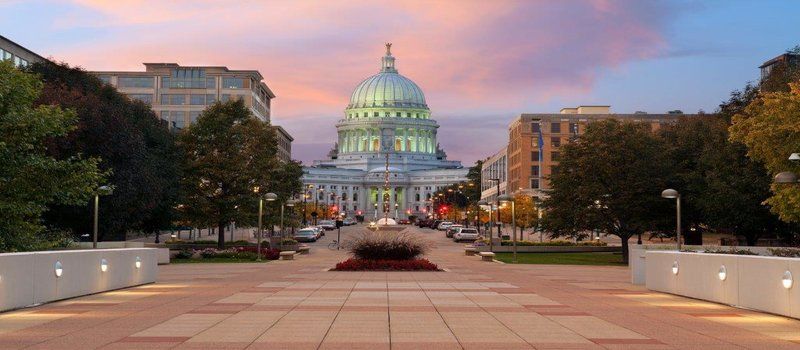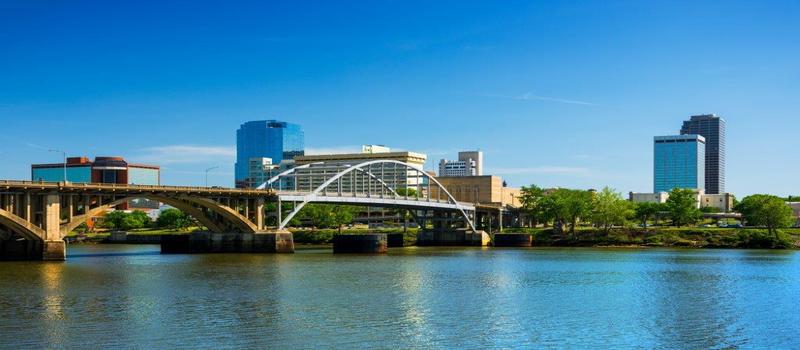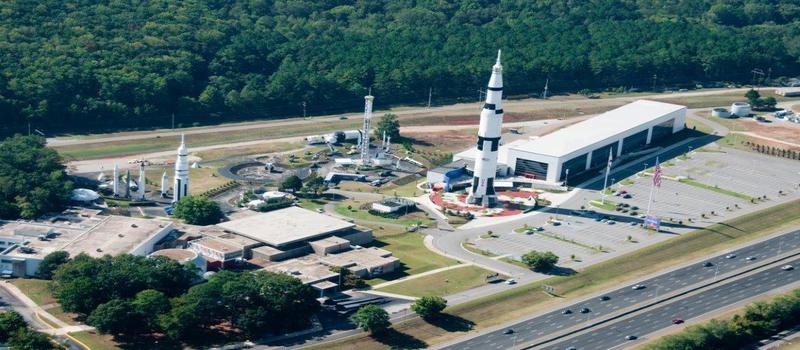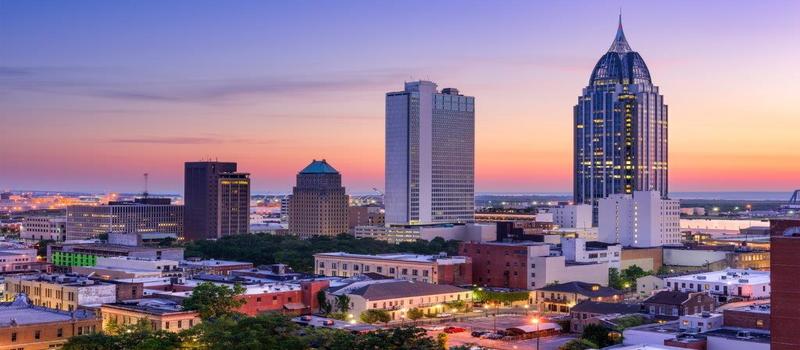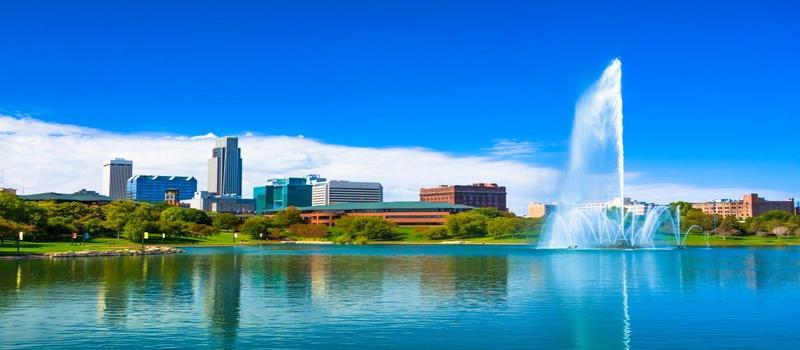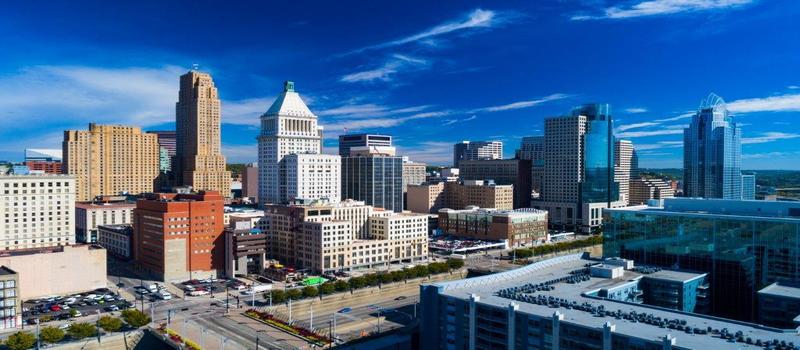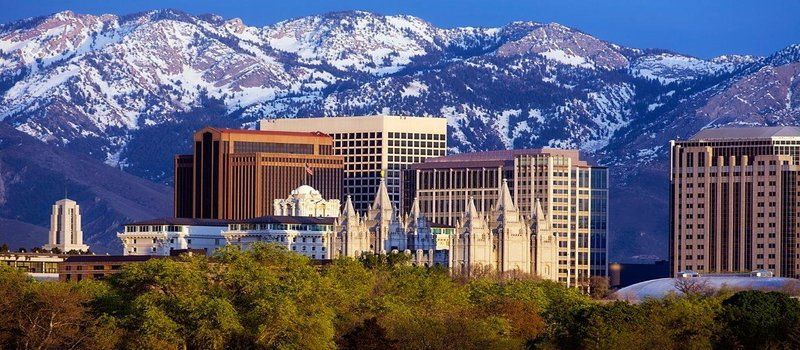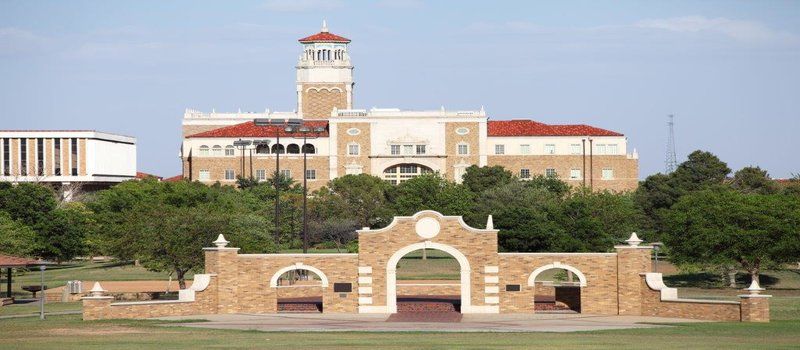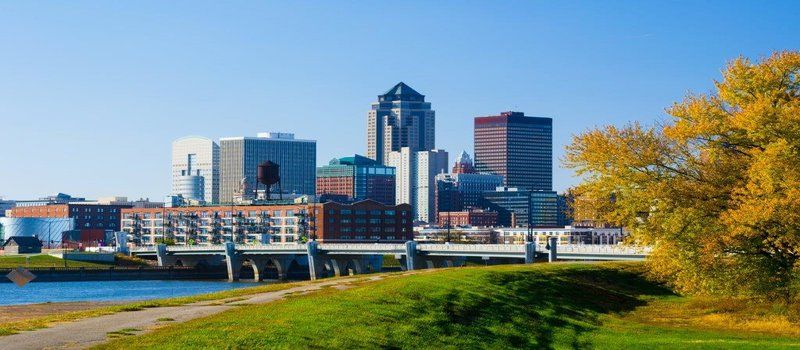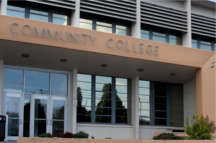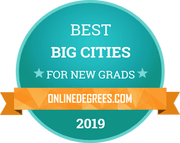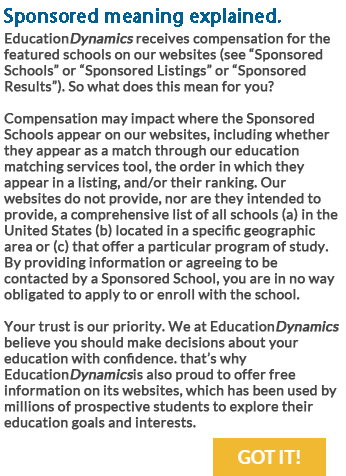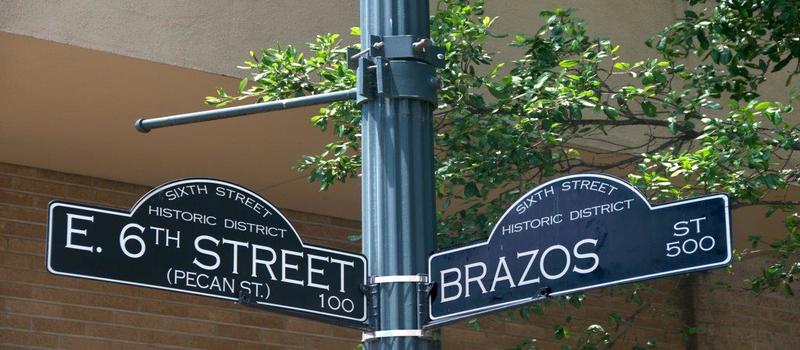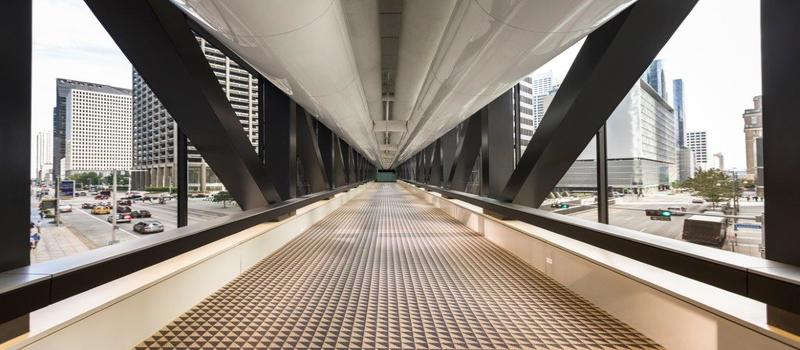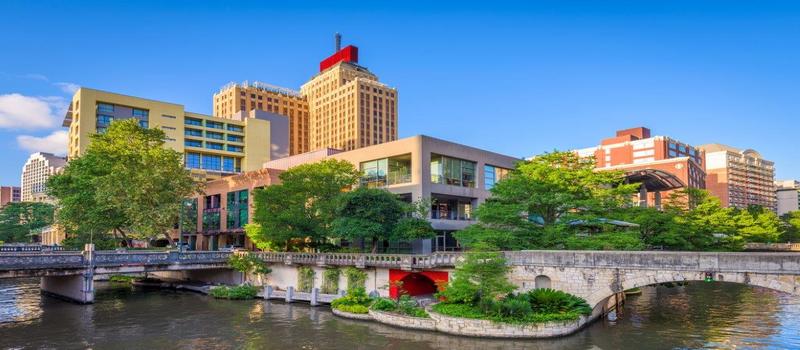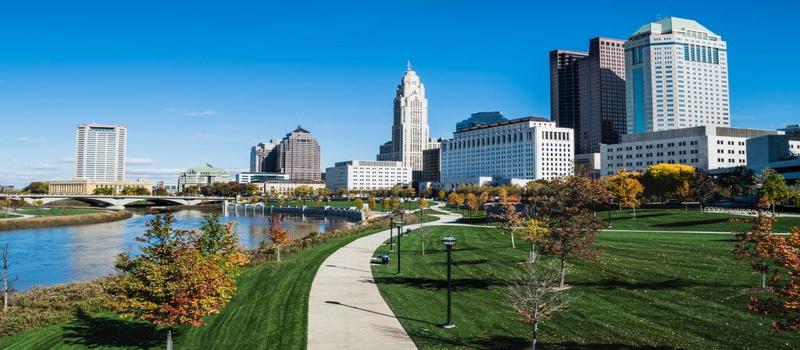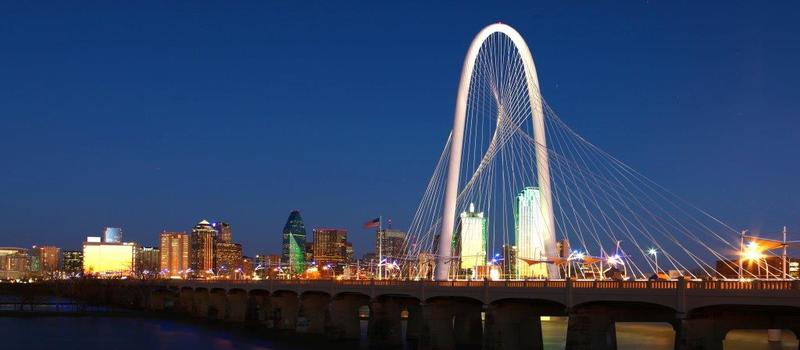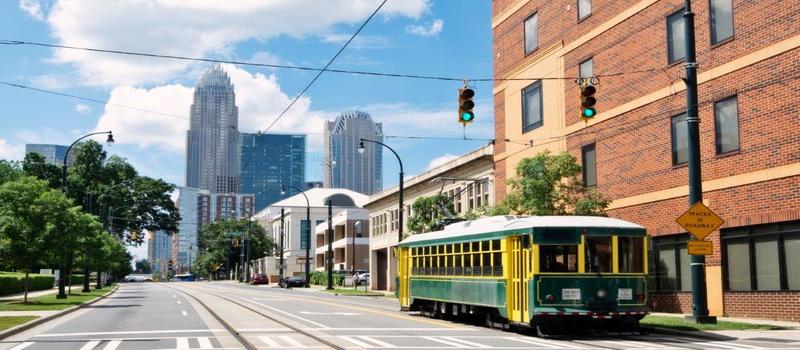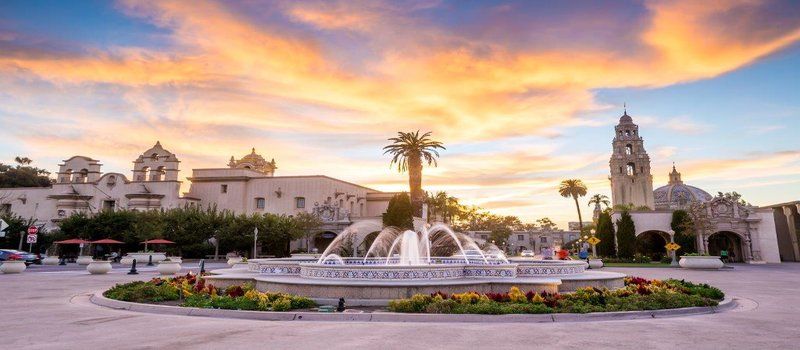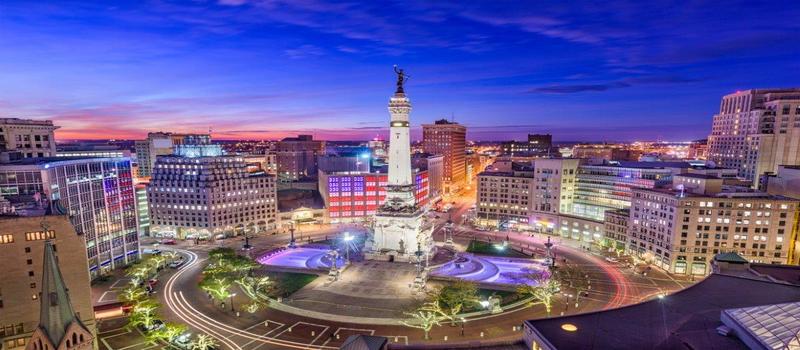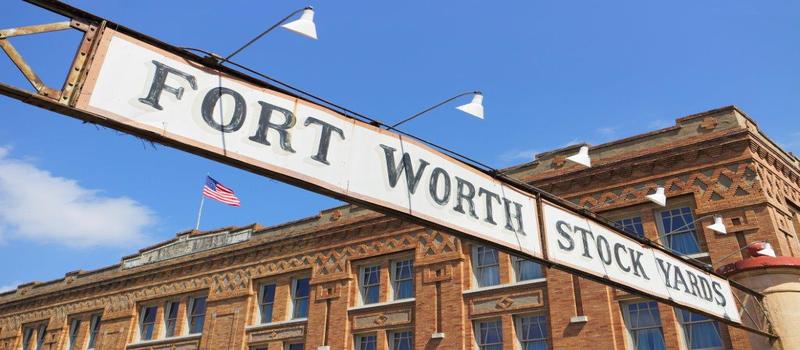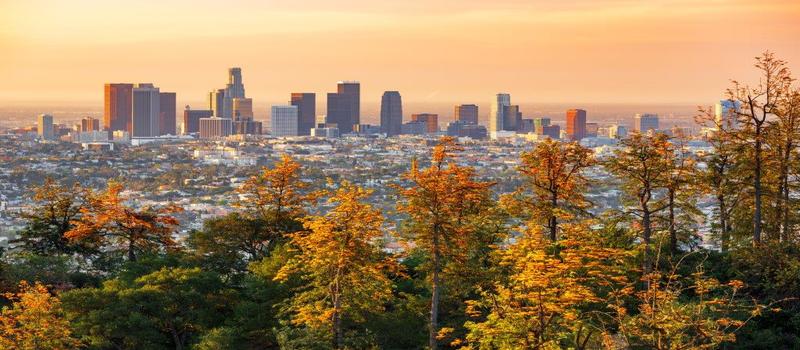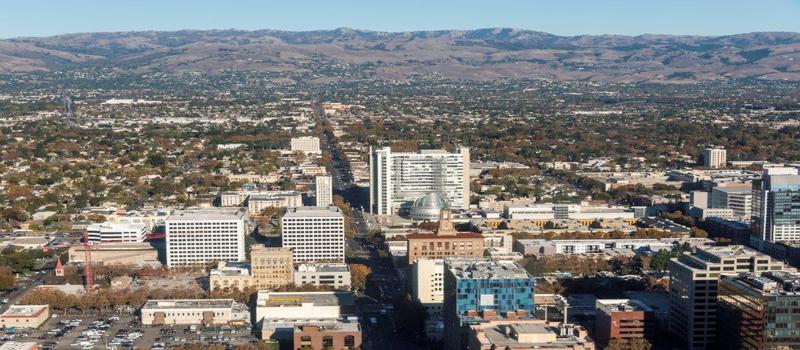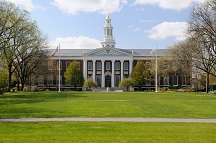
Finishing college and heading out into the world is an exciting time in life. Deciding where to live can impact your spending, your activities, your engagement level, friendships, outdoor life and even business opportunities.
If you are hooked on the idea of living and working in a small town, this list of the 15 best small cities for new grads could help with your decision-making. With cities located from the West to East coast — and even in the Midwest — our list highlights areas ranked for median earnings for bachelor’s degree holders, number of art and entertainment centers, overall state employment growth and more. New for this year’s list, we also considered factors such as commute time to work and crime rate. In fact, the small cities were rated on seven metrics in all, using a 10-point scale.
List of 15 Best Small Cities for New Grads 2019
To compile this year’s list, we looked at 335 U.S. cities with populations of 50,000 to 150,000, using data from the U.S. Census Bureau. This year’s list features new cities like Abilene, Texas, Bowling Green, Kentucky and College Station, Texas. What you find may surprise you, so keep on reading this OnlineDegrees.com article for highlights on 15 of the best small cities for new grads in the U.S.
1. Bloomington, Illinois
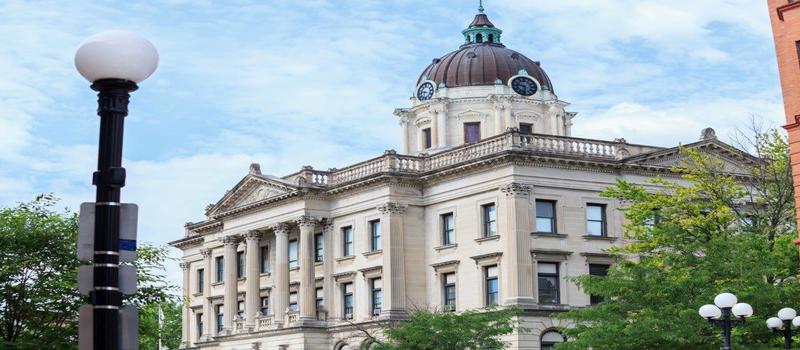
Abraham Lincoln once spent time in the Bloomington area serving as an attorney, but this city of 75,000-plus residents offers more than just a historical perspective to new grads. Bloomington, located in central Illinois, made our list of best small cities for new grads for its satisfyingly low unemployment rate (lower than the national average, as of March 2019) and high average wages for bachelor’s degree holders — reaching above $74,000.
Those wages, which happen to be above the national average, too, could be put to use enjoying British car shows, kite festivals, and wine, cheese and chocolate festivals or for visiting nearby vineyards or the aquatic center. All in all, new grads can expect to find Midwestern hospitality in this city, located in the central part of the state.
Featured data points:
- Percent of population between 20 and 34, 2017: 25.4%
- Median rent, 2017: $721
- Median earnings for bachelor’s degree holders, 2017: $74,853
- Average projected job growth rate statewide among jobs requiring a bachelor’s degree or above, 2016-26: 5.8%
- Art and entertainment centers: 340
- Average commute time to work: 15.6
- Crime rate per 100K people: 4,465
2. Greenville, South Carolina
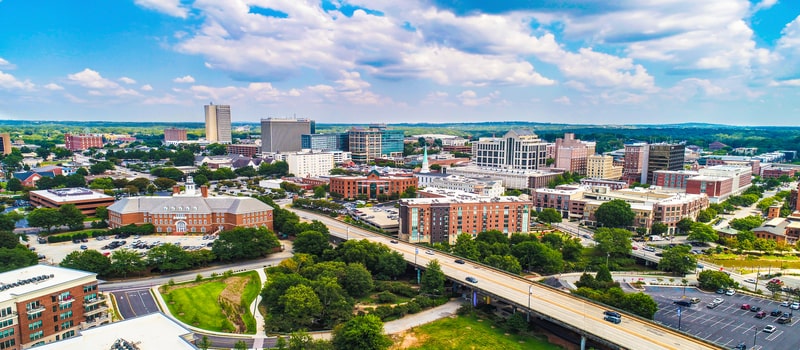
Averaging 220 sunny days each year, Greenville is rich not only in sunshine, but also in potential opportunity for new graduates. This city of 68,000-plus people has more than 250 international firms and the highest foreign investment per capital in the entire country. Its downtown skyline includes multi-use buildings, condos and new hotel development while the city’s Eastside is a hub for innovation and technology.
Greenville, located close to the Blue Ridge Mountains, made our list of best small cities for new grads for its high number of art and entertainment centers, low unemployment rate and short commute time. Any new grad moving there might enjoy the 30-foot waterfalls at the city’s Fall Parks, too.
Featured data points:
- Percent of population between 20 and 34, 2017: 25.4%
- Median rent, 2017: $802
- Median earnings for bachelor’s degree holders, 2017: $52,523
- Average projected job growth rate statewide among jobs requiring a bachelor’s degree or above, 2016-26: 11.6%
- Art and entertainment centers: 751
- Average commute time to work: 20.9
- Crime rate per 100K people: 10,658
3. Lafayette, Indiana
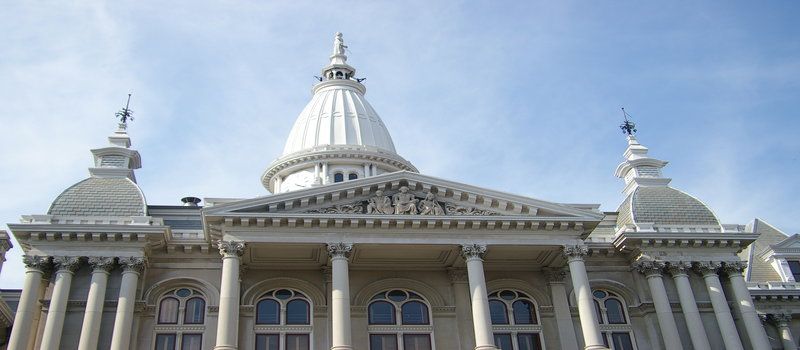
It may come as a surprise that Axl Rose, Neil Armstrong and Amelia Earhart have ties to Lafayette, Indiana, but there are plenty of other inspiring reasons to move to this city of approximately 71,000 people. Home to Purdue University, a research institution, as well as a diversified community featuring education, manufacturing, retail and transportation, new grads may want to call this city, located 108 miles southeast of Chicago, home.
Out of all the small cities featured on this list, Lafayette scored closest to the top for shortest average commute time. The city also ranked fairly well for the number of entertainment centers it has per 100,000 people. The Wabash Heritage Trail, Celery Bog Nature area and farmers markets are just a few ways for new grads and young adults to enjoy their time there.
Featured data points:
- Percent of population between 20 and 34, 2017: 27.8%
- Median rent, 2017: $740
- Median earnings for bachelor’s degree holders, 2017: $55,541
- Average projected job growth rate statewide among jobs requiring a bachelor’s degree or above, 2016-26: 7.6%
- Art and entertainment centers: 359
- Average commute time to work: 16.6
- Crime rate per 100K people: 10,638
4. Bowling Green, Kentucky
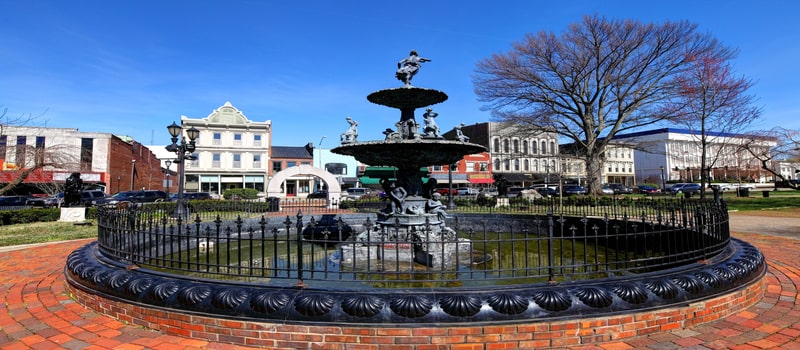
Entirely new to our list of best small cities for new grads, Bowling Green is the third most populated city in Kentucky and has a location that is about 60 miles north of Nashville. Still, its population of about 67,000 residents makes it a quaint place for living and starting out a career. In fact, it’s no small point of pride that Duncan Hines, the well-known cake mix creator, was born and lived there.
New grads can make their own opportunities in this city that is home to top-of-the line attractions, natural wonders and friendly neighborhood communities. Bowling Green ranked moderately well for median earnings for bachelor’s degree holders, median rent and number of arts and entertainment centers. New grads might seek employment at places such as Western Kentucky University, Sun Products Corporation or General Motors Corporation.
Featured data points:
- Percent of population between 20 and 34, 2017: 31.8%
- Median rent, 2017: $663
- Median earnings for bachelor’s degree holders, 2017: $51,285
- Average projected job growth rate statewide among jobs requiring a bachelor’s degree or above, 2016-26: 6.5%
- Art and entertainment centers: 402
- Average commute time to work: 17.7
- Crime rate per 100K people: 10,616
5. Eau Claire, Wisconsin
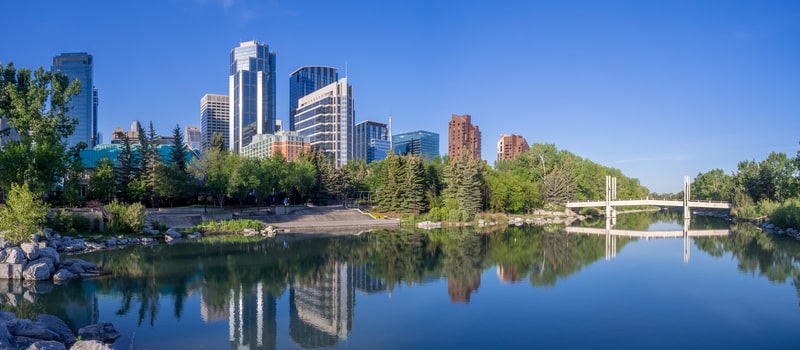
This town of nearly 70,000 people is located where the Eau Claire and Chippewa rivers meet, but also prides itself as being the “Indie Capital of the Midwest.” Live music, the Chippewa River Water Trail and the River Prairie Amphitheater provide many opportunities for enjoyment while strong industries in healthcare, hi-tech, manufacturing and retail provide leads for jobs.
A university town, Eau Claire scored near the top of cities on this list for stellar commute time — just 16 minutes — and also ranked fairly well for number of entertainment centers and median rent. New grads who love the water may just love Eau Claire — which also happens to be French for ‘clear water.’
Featured data points:
- Percent of population between 20 and 34, 2017: 30%
- Median rent, 2017: $712
- Median earnings for bachelor’s degree holders, 2017: $50,872
- Average projected job growth rate statewide among jobs requiring a bachelor’s degree or above, 2016-26: 6.7%
- Art and entertainment centers: 386
- Average commute time to work: 16
- Crime rate per 100K people: 5,418
6. Conway, Arkansas

Scoring the lowest for crime rate of all 15 cities on this list, Conway has its own police department that patrols the city by district. The Conway Police Department website also provides crime statistics, information on calls for service and crash reports. New graduates may be interested in moving to this safe city and pursuing a job in law enforcement or with other employers such as Acxiom Corporation — a telecommunications company, Conway Regional Health System or the University of Central Arkansas.
The downtown area, home to more than 300 businesses, also features a data district offering gigabyte internet service. This city of 65,000 also ranked well for median rent and median earnings for bachelor’s degree holders.
Featured data points:
- Percent of population between 20 and 34, 2017: 29.8%
- Median rent, 2017: $701
- Median earnings for bachelor’s degree holders, 2017: $57,295
- Average projected job growth rate statewide among jobs requiring a bachelor’s degree or above, 2016-26: 10.4%
- Art and entertainment centers: 284
- Average commute time to work: 18.4
- Crime rate per 100K people: 822
7. Mountain View, California

Most people know that Mountain View is home to the iconic Google Corporation (employing 24,000 people), but few know that this city has a population of just over 80,000 and was originally founded as a stagecoach station. Although rent in this city is high compared to other cities on this list, the city also has a rent stabilization and fair rent act to help keep rent from sky-rocketing.
In addition to looking for employment with Google, new grads could seek opportunities with companies like Microsoft, Mozilla, Omnicell or Symantec – companies that are located in Mountain View. The city, which offers a view of the mountains, ranked second highest on our list for median earnings for bachelor’s degree holders (above $70,000). Earnings like these could help to offset the city’s rent and cost of living, but could also help make diversions in the city or elsewhere along the southwest shore of San Francisco Bay more affordable.
Featured data points:
- Percent of population between 20 and 34, 2017: 30.9%
- Median rent, 2017: $1,617
- Median earnings for bachelor’s degree holders, 2017: $72,073
- Average projected job growth rate statewide among jobs requiring a bachelor’s degree or above, 2016-26: 10.7%
- Art and entertainment centers: 419
- Average commute time to work: 24.2
- Crime rate per 100K people: 5,445
8. College Station, Texas
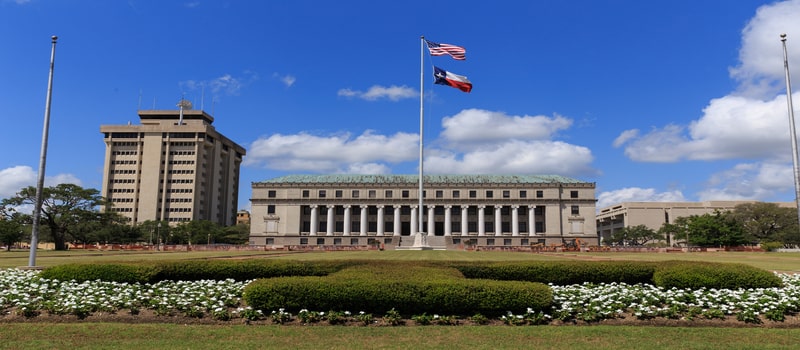
Home to the main campus of Texas A&M, College Station is a welcoming place for new graduates of schools in the Lone Star state or elsewhere in the U.S. College Station, located in East Central Texas, ranked well among the small cities on our list for average commute time, affordable median rent and low unemployment — in fact, its rate is even lower than the national average.
Young adults who are keen on night life can head to the city’s Northgate district, which features clubs, local restaurants and sports bars. New grads also can get outdoors to enjoy the likes of the Texas Renaissance Festival, the Brazos Valley Boofest or the Bluebonnet Annual Rod Run. It may come as no surprise that Texas A&M is a top employer in College Station, but so is St. Joseph Regional Health System, Sanderson Farms, Inc., and Reynolds and Reynolds, an automotive software development company.
Featured data points:
- Percent of population between 20 and 34, 2017: 42.2%
- Median rent, 2017: $875
- Median earnings for bachelor’s degree holders, 2017: $49,680
- Average projected job growth rate statewide among jobs requiring a bachelor’s degree or above, 2016-26: 16.6%
- Art and entertainment centers: 273
- Average commute time to work: 16.1
- Crime rate per 100K people: 5,082
9. Tyler, Texas
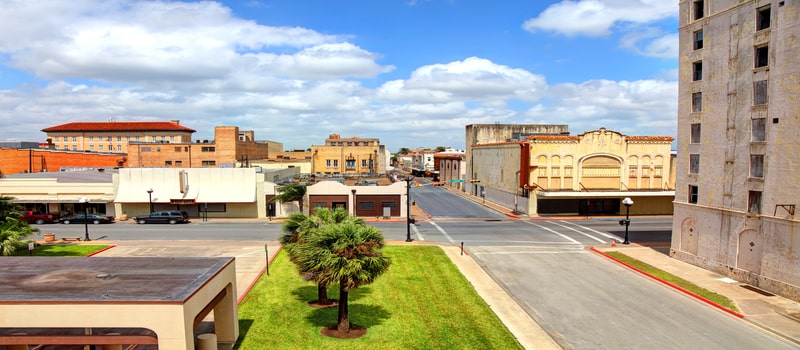
Known as the Rose Capital of America, the city of Tyler is captivating for its large municipal rose garden, but also its rolling hills and the abundance of natural lakes in the area. Tyler joins our list of best small cities for new grads for an average commute time of less than 20 minutes and median rent of less than $830. Other appreciable factors are its large number of art and entertainment centers — important in a city of nearly 105,000 — and median wages of more than $60,000 for bachelor’s degree holders. Named after President John Tyler, the city has a strong business base in education, healthcare, manufacturing, retail and, of course, rose growing.
Featured data points:
- Percent of population between 20 and 34, 2017: 20.8%
- Median rent, 2017: $832
- Median earnings for bachelor’s degree holders, 2017: $61,447
- Average projected job growth rate statewide among jobs requiring a bachelor’s degree or above, 2016-26: 16.6%
- Art and entertainment centers: 338
- Average commute time to work: 19.9
- Crime rate per 100K people: 8,746
10. Fargo, North Dakota
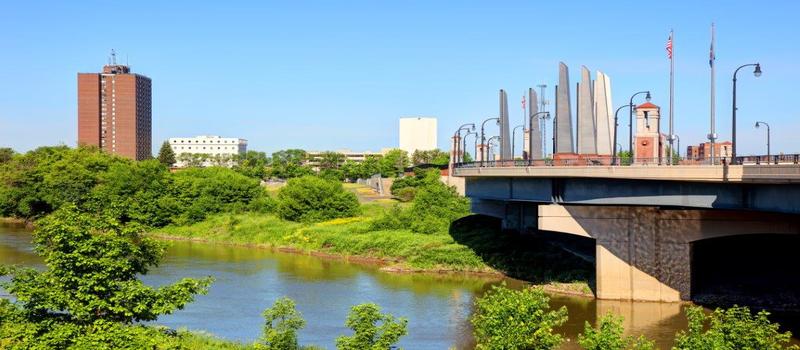
Even though Fargo is North Dakota’s largest city, it still has a population that is just under 125,000. Named after a partner in the original Wells, Fargo and Company, the city has an airport (with service from five airlines), a downtown area with a bicycle zone and lockers, and a business improvement district.
New grads to this city might be drawn by its top commute time — the best on this list — at 14.9 minutes and low employment rate of just 2.9 percent. Fargo also offers affordable rents and plenty to do in terms of arts and entertainment, including the theater, performing arts, opera, galleries and museums. Swimming pools, golfing, trails and parks provide additional activities for new graduates.
Featured data points:
- Percent of population between 20 and 34, 2017: 32.3%
- Median rent, 2017: $752
- Median earnings for bachelor’s degree holders, 2017: $48,934
- Average projected job growth rate statewide among jobs requiring a bachelor’s degree or above, 2016-26: 11.4%
- Art and entertainment centers: 313
- Average commute time to work: 14.9
- Crime rate per 100K people: 6,652
11. Columbia, South Carolina

Averaging 222 days of sunshine a year and an average of two inches of snow, Columbia provides an ample number of bright days for exploration. This capital city of South Carolina has a population of just more than 135,000 people and offers a stellar commute time of about 15 minutes — advantageous for new grads who may be headed to a company like Palmetto Health (employing more than 7,000 people) or other large businesses in the city, including Branch Banking & Trust Company or the University of South Carolina. Also offering ample arts and entertainment venues and a very agreeable median rent, Columbia could be a good choice for people who enjoy the water. In fact, the city has a 50,000-acre lake and three rivers that run through it.
Featured data points:
- Percent of population between 20 and 34, 2017: 31.5%
- Median rent, 2017: $711
- Median earnings for bachelor’s degree holders, 2017: $49,890
- Average projected job growth rate statewide among jobs requiring a bachelor’s degree or above, 2016-26: 11.6%
- Art and entertainment centers: 413
- Average commute time to work: 15.2
- Crime rate per 100K people: 12,485
12. Johnson City, Tennessee

Boating, disc golf and walking trails make Johnson City, located in Eastern Tennessee, a unique place for graduates fresh out of college. Young adults can put their skills to work through a variety of potential employers, such as East Tennessee State University (Known at ETSU!), Mountain State Health Alliance and AO Smith Water Products Company. They can also feel right at home in a city that knows how to celebrate. Johnson City recognizes 150 years in 2019 and boasts numerous events including Business and Biscuits, the Regional Excellence Awards and a birthday bash in commemoration of the city’s founder, Henry Johnson.
Johnson City, with just more than 65,000 residents, made our list of best small cities for new grads for its wide options in terms of arts and entertainment centers, low median rent and a commute-to-work time of less than 20 minutes.
Featured data points:
- Percent of population between 20 and 34, 2017: 24.3%
- Median rent, 2017: $705
- Median earnings for bachelor’s degree holders, 2017: $51,759
- Average projected job growth rate statewide among jobs requiring a bachelor’s degree or above, 2016-26: 11.2%
- Art and entertainment centers: 399
- Average commute time to work: 19.1
- Crime rate per 100K people: 8,133
13. Abilene, Texas
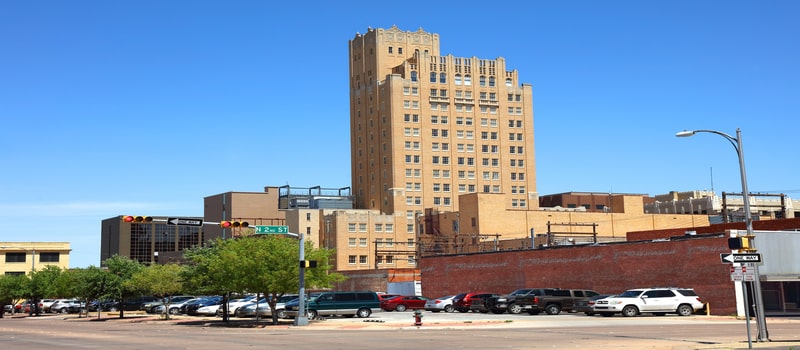
Who would think that Abilene, Texas could offer such vast opportunities to new grads? This Western-Central Texas town is home to an historic fort, a convention center, a zoo, runners club, opera association (yes!) and even a regional airport, with flights offered through American Airlines. Not every small city offers these advantages, but this city of more than 125,000 people does.
In fact, Abilene is the center of a larger 22 county area, often called the Texas Midwest or simply “Big Country.” Offering industry as varied as commerce, distribution, education and hospitality, Abilene is located in a state with strong projected employment, but also in an area full of history and culture. Young professionals may find this city’s short commute times and affordable median rents attractive as well as be drawn by the history of a once rowdy frontier town.
Featured data points:
- Percent of population between 20 and 34, 2017: 29.1%
- Median rent, 2017: $738
- Median earnings for bachelor’s degree holders, 2017: $51,015
- Average projected job growth rate statewide among jobs requiring a bachelor’s degree or above, 2016-26: 16.6%
- Art and entertainment centers: 272
- Average commute time to work: 16.4
- Crime rate per 100K people: 9,823
14. Fort Smith, Arkansas
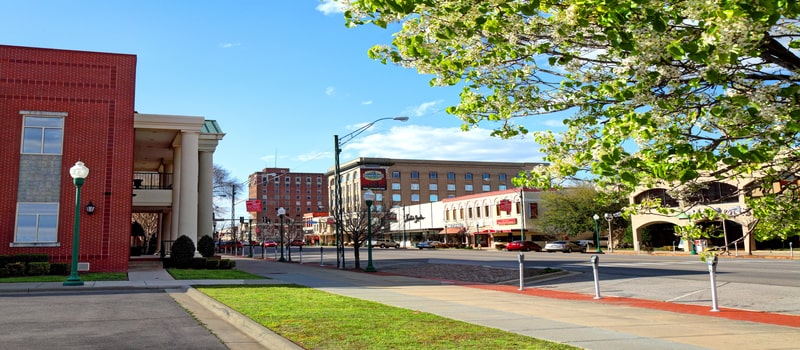
It may be hard to beat the low median rent and higher median earnings available in Fort Smith, but this city of 88,000-plus also offers a low crime rate and a wide range of arts and entertainment choices for up-and-coming professionals. Located in northwest Arkansas, along the Arkansas River, the city’s original pioneering spirit lives on today in its welcoming, inviting atmosphere.
Top employers in Fort Smith include the Sparks Health System, Mercy Hospital Fort Smith, Baldor Electric Company and the trucking and logistics company, ArcBest Corporation. Fort Smith is also home to strong industries in manufacturing, retail and mining, oil and gas extraction. The city is located near the junction of two interstates, providing plenty of opportunity for travel in and out of this historic, but contemporary town.
Featured data points:
- Percent of population between 20 and 34, 2017: 19.7%
- Median rent, 2017: $518
- Median earnings for bachelor’s degree holders, 2017: $61,936
- Average projected job growth rate statewide among jobs requiring a bachelor’s degree or above, 2016-26: 10.4%
- Art and entertainment centers: 306
- Average commute time to work: 16.3
- Crime rate per 100K people: 1,471
15. Santa Clara, California
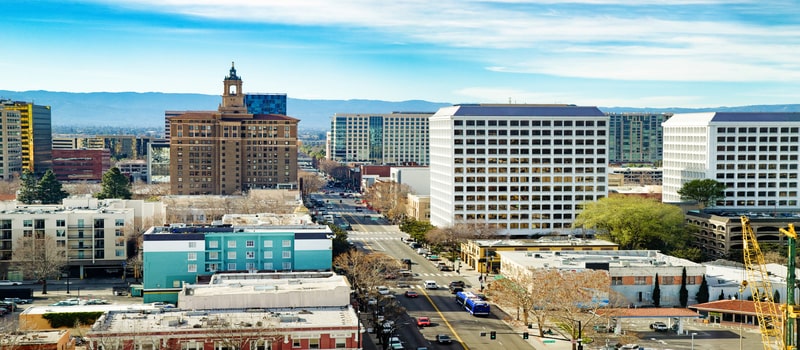
This business-friendly city of 127,000 is home to tree-lined communities, busy shopping areas and tech companies such as Agilent Technologies, Chegg, Hortonworks, Nvidia and Oracle. Nearly 30 percent of the population in this city is between the ages of 20 and 34 and the median earning for bachelor’s degree holders — above $60,000 — help to make rent more affordable.
New grads could find inspiring opportunities at Santa Clara University — or go back to school there — and also head out to San Francisco 49ers games or city-sponsored events, like sunset cinemas. Grads also might be interested in the ongoing sustainability speaker series, broaching topics such as urban bicycling and adopting zero waste behaviors, or take in technology history at the Intel Museum.
Featured data points:
- Percent of population between 20 and 34, 2017: 28.5%
- Median rent, 2017: $1,580
- Median earnings for bachelor’s degree holders, 2017: $60,587
- Average projected job growth rate statewide among jobs requiring a bachelor’s degree or above, 2016-26: 10.7%
- Art and entertainment centers: 348
- Average commute time to work: 23.8
- Crime rate per 100K people: 6,053
Methodology
For this analysis, we ranked 335 U.S. cities that had a city population of more than or equal to 50,000 but less than 150,000 according to 2017 estimates from the U.S. Census Bureau. Each city was ranked on a 10 point scale, using the following seven data points and the weights specified.
- Median monthly rent adjusted to the Cost of Living Index, American Community Survey, 2017
- Percent of housing units that are occupied by renters rather than owners, American Community Survey, 2017
- Percent of the population between the ages of 20 and 34, American Community Survey, 2017
- Median earnings for bachelor’s degree holders adjusted to the Cost of Living Index, American Community Survey, 2017
- Arts & Entertainment: The number of performing arts, spectator sports and related industries; museums and historical sites; restaurants; and bars per 100,000 residents in each metro area, U.S. Census Population Estimates, 2012; County Business Patterns, 2012
- State job growth projections: The average projected growth rate and the projected number of new jobs per 100 people in each metro area, 2016-26, Projections Central, 2016
- Unemployment rate, American Community Survey, 2017
- Average Commute time, American Community Survey, 2017
- Crime rate per 100,000 people, Uniform Crime Reporting, 2015
Methodology Sources:
- American Community Survey, 2017, U.S. Census Bureau, https://www.census.gov/programs-surveys/acs/
- 2017 Occupational Employment Statistics and 2016-26 Employment Projections, Bureau of Labor Statistics, BLS.gov; 2016-26 State Occupational Projections, Projections Central, projectionscentral.com
- Uniform Crime Reporting, 2015, Federal Bureau of Investigation, https://ucr.fbi.gov/crime-in-the-u.s/2015/crime-in-the-u.s.-2015
Sources:
- 20 Best Companies To Work For In Santa Clara, CA, Zippia, Accessed April 2019, https://www.zippia.com/company/best-companies-in-santa-clara-ca/
- 24 Reasons You Need To Move to Lafayette, Indiana, MoveTo.com, Accessed April 2019, https://www.movoto.com/blog/opinions/24-reasons-you-need-to-move-to-lafayette/
- About Abilene, City of Abilene, Texas, Accessed April 2019, http://abilenetx.gov/living/about-abilene
- About Bowling Green, KY, Visit BGKY, Accessed April 2019, https://www.visitbgky.com/visit/about-bgky/about-bowling-green/
- About BN, Visit BN, Accessed March 2019, http://www.visitbn.org/about/
- About Santa Clara, City of Santa Clara, Accessed April 2019, http://santaclaraca.gov/government/about-santa-clara
- About Tyler Texas, Tyler Texas Online, Accessed April 2019, https://www.tylertexasonline.com/about-tyler-texas.htm
- Area History, Home of Purdue, Accessed April 2019, https://www.homeofpurdue.com/ourcommunity/areahistory/
- Arts & Culture, Fargo Moorhead, Accessed April 2019, https://www.fargomoorhead.org/things-to-do/arts-culture/
- College Station TX Top Employers, Livability.com, Accessed April 2019, https://livability.com/tx/college-station/business/college-station-tx-top-employers
- Events, Visit BN, Accessed March 2019, http://www.visitbn.org/events/categories/festivals/
- Fargo, Encyclopedia Britannica, Accessed April 2019, https://www.britannica.com/place/Fargo-North-Dakota
- Fort Smith, Arkansas.com, Accessed April 2019, https://www.arkansas.com/fort-smith
- Industries in Eau Claire, City of Eau Claire, Accessed April 2019, https://www.eauclairedevelopment.com/doing-business/major-industries/
- In the Beginning, Visit Greenville, S.C., Accessed April 2019, https://www.visitgreenvillesc.com/about-greenville/history/
- Johnson City 150, Johnson City, Tennessee, Accessed April 2019, https://www.johnsoncitytn.org/residents/jctn150/index.php
- Living in Columbia, Columbia, South Carolina, Accessed April 2019, http://columbiasouthcarolina.net/
- Local Attractions, The George, Accessed April 2019, https://www.thegeorgetexas.com/things-to-do.htm
- Major Employers in Washington County, Tennessee, Johnson City Source Book, Accessed April 2019, http://johnsoncitysourcebook.com/major-employers-in-washington-county-tennessee/
- Major Mountain View Companies, City of Mountain View, Accessed April 2019, https://www.mountainview.gov/depts/comdev/economicdev/companies.asp
- Rent Stabilization, City of Mountain View, Accessed April 2019, https://www.mountainview.gov/depts/comdev/preservation/rentstabilization/default.asp
- Top Employers-Bowling Green, Bowling Green, Kentucky, Accessed April 2019, http://www.bgky.org/businesses/top-employers
- Top Employers in Columbia, S.C., Livability.com, Accessed April 2019, https://livability.com/sc/columbia/business/top-employers-in-columbia-sc
- Top Employers in Fort Smith, AK, Livability.com, Accessed April 2019, https://livability.com/ar/fort-smith/business/top-employers-in-fort-smith-ar
- Welcome to Eau Claire, Visit Eau Claire, Accessed April 2019, https://www.visiteauclaire.com/






